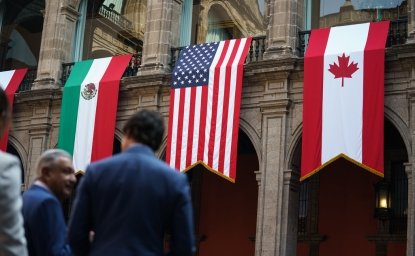Two documents released this week drive that home. The first is a paper by Erik Lee of the North American Center for Transborder Studies and Christopher E. Wilson of the Woodrow Wilson Institute called “The State of Trade, Competitiveness and Economic Well-being in the U.S.-Mexico Border Region.” It lays out succinctly the benefits of what is essentially a joint production system between the two countries in sectors like automobiles, aerospace, and medical devices, with a supply chain that straddles the border. Cross-border production has allowed for more efficient location of business activities in ways that enhance productivity, lower costs, and help North American-based companies to compete more effectively with Asia and Europe.
Over the past decade, however, that deep integration has become considerably shallower. From 1993 to 2000 bilateral trade grew at 17 percent annually; from 2000-2008 it grew at just 4.5 percent. Some of this was the impact of China, which became increasingly attractive as a platform for exports to the United States. But a big factor was the hardening of the border that occurred after 9/11. Northbound car traffic has fallen by one-third since 2000, and truck traffic has barely grown. And even as the Border Patrol doubled in size to discourage illegal immigration, few inspectors were added at the ports of entry to help commerce and lawful travel. While estimates vary, increased border restrictions and the resulting congestion has cost the U.S. economy tens of billions of dollars annually, and almost certainly pushed some production out of North America.





